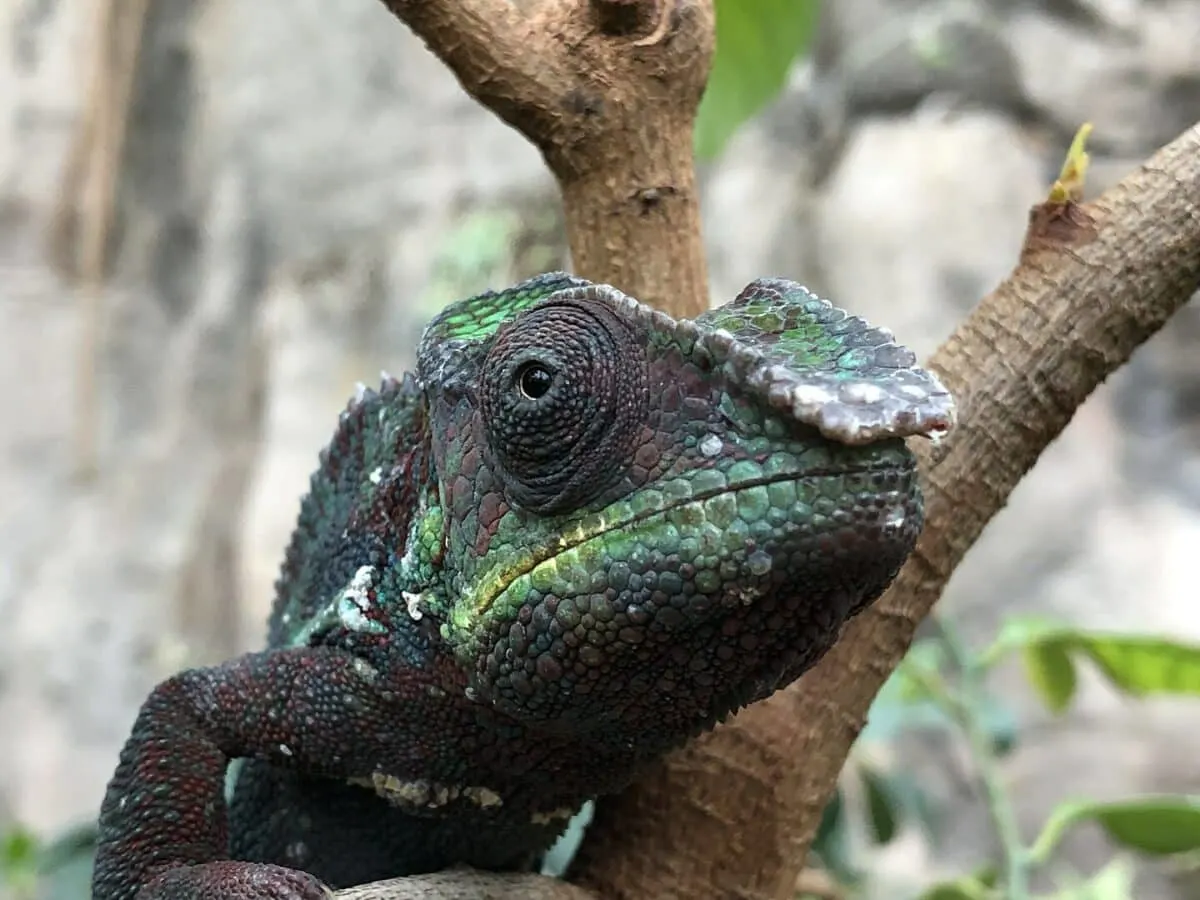There are many fascinating species in nature. Big-eyed animals are captivating. From the ocean’s depths to the Amazon rainforest, these creatures have evolved to have wide, expressive eyes that may grab our hearts. This post will discuss the top 10 animals with huge eyes, including fascinating information. From the eerily gorgeous depths of the oceans to the smallest species in our backyards, we’ll learn what makes these creatures special and why their striking ocular features fascinate us. Prepare to be charmed by the enchanting world of big-eyed animals.
1. BearCat
Southeast Asia’s herbivorous Binturong is the Bearcat. The Bearcat, with its long tail, sharp claws, and shaggy coat, is distinguished by its huge, black eyes and remarkable facial expression. A bony ridge protects the Bearcat’s eyes, which cover half of its skull. Bearcats use their sense of smell to explore and find food in impenetrable woodlands despite their size.
Bearcats need huge eyes to see in low light. They are nocturnal and use their incredible vision at night. Their large eyes and careful location let them see the light and shadow in the dark while hunting and evading predators. The Bearcat’s eyes provide excellent depth awareness when climbing and jumping between trees in their arboreal habitat.
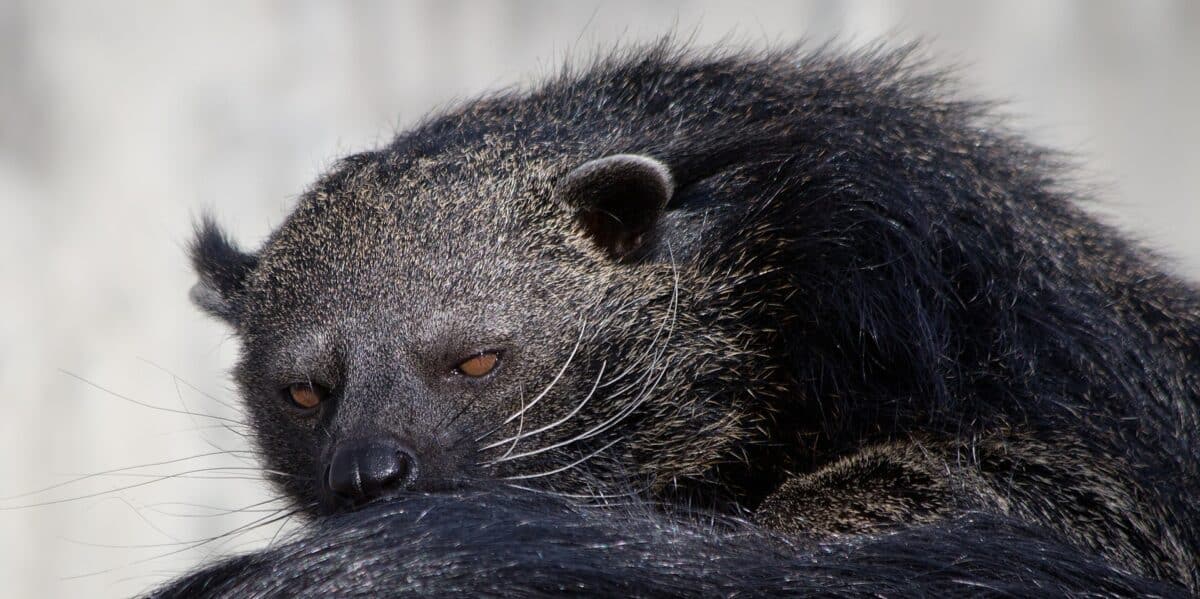
2. Tarsier
The Southeast Asian tarsier is one of the most unique large-eyed animals. Tarsiers are a natural marvel with their tiny bodies and enormous eyes. Eyes bigger than brains! These primates can twist their heads 180 degrees to see more. Their big corneas and pupils help them see in low light. They can hunt insects and small animals at night. They can also leap 40 times their body length to attack prey in midair. The interesting tarsier’s huge eyes help them survive in their natural surroundings.
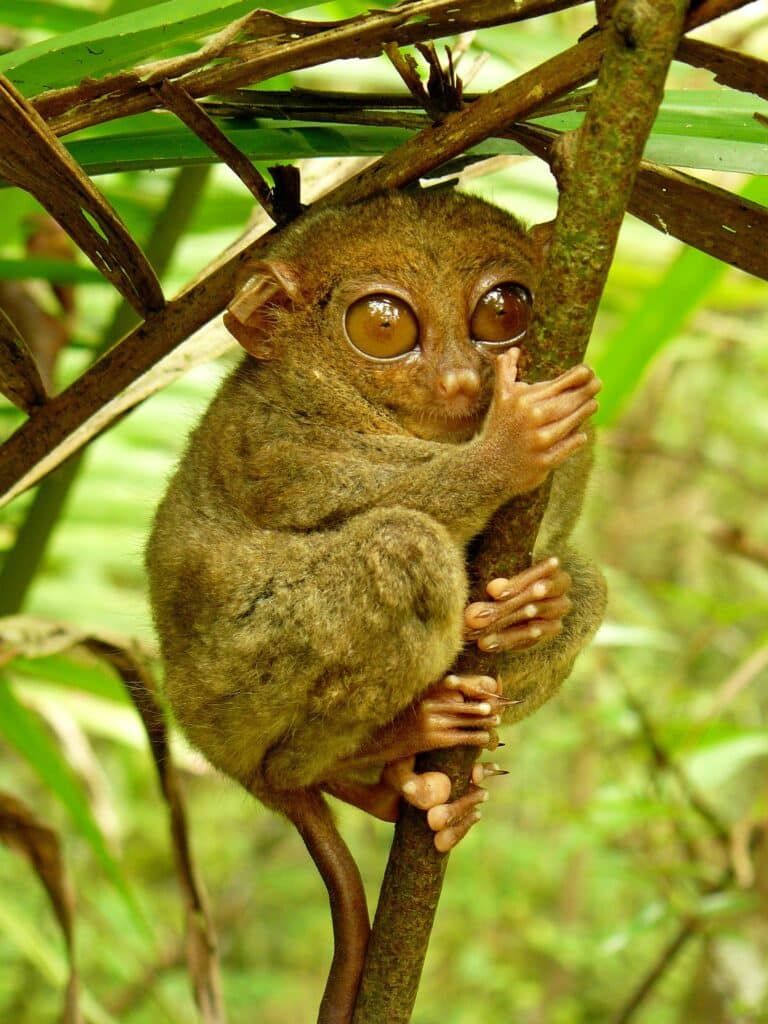
3. Chameleon
Chameleons are famous for their bulging, independently moving eyes. Chameleons have 360-degree vision thanks to their swivel-and-focus eyes. Their “spectacle” eyelids shield and allow them to see. When hunting, chameleons can watch for prey or predators without being seen. Chameleons can precisely calculate the distance to their prey with their big, movable eyes. Chameleons’ huge, flexible eyes help them hunt and survive.
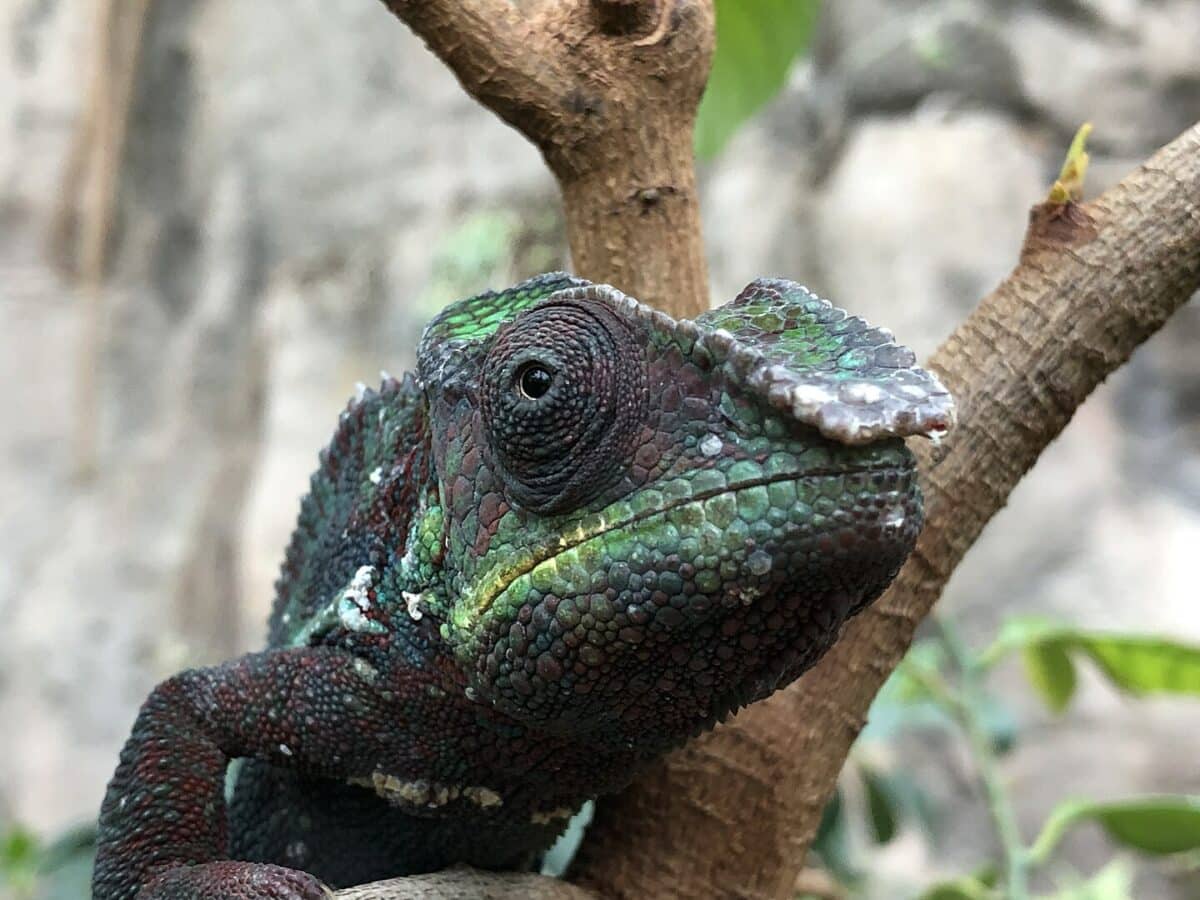
4. Big Squid
Giant squids are enigmatic ocean dwellers. The gigantic squid’s size and uncanny appearance make it fascinating. The giant squid is one of the world’s largest animals at 43 feet. The giant squid’s huge eyes stand out. The squid’s eyes are the world’s largest. Giant squid eyes are basketball-sized at 10 inches.
In the deep sea, the giant squid’s large eyes are vital. First, they let the squid detect even the smallest light in the almost pitch-black deep ocean. These large eyes are sensitive to light changes, helping the squid avoid predators and find meals. The gigantic squid’s enormous eyes allow it to perceive risks from all directions. The giant squid’s deep-sea life depends on its exceptional vision for finding prey and avoiding predators. Photophores in the giant squid’s eyes lure prey and confound predators.
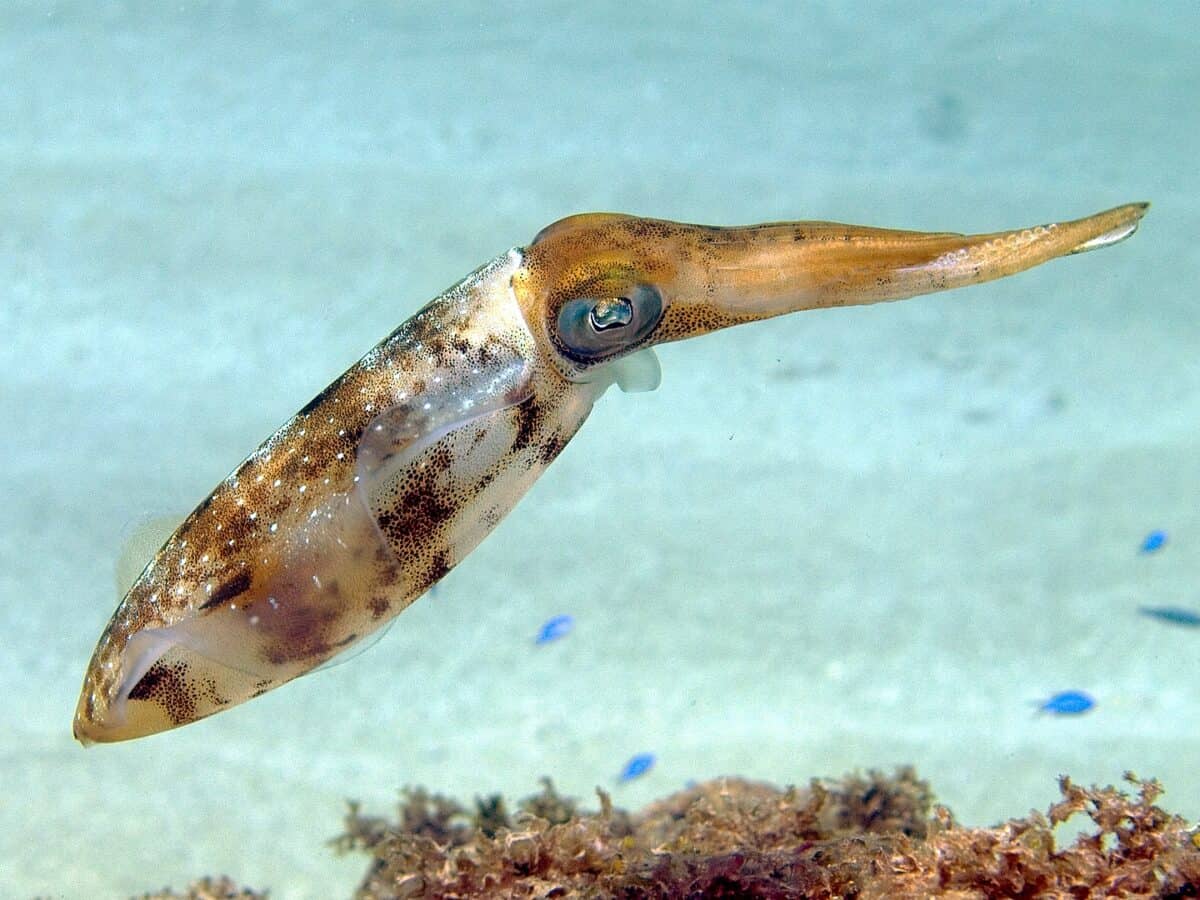
5. Owl Monkey
South American rainforest owl monkeys, often known as night monkeys, are rare primates. They are one of the few fully nocturnal monkey species. Their large, close-set eyes provide them with outstanding stereoscopic vision. This enhances their depth awareness and forest floor navigation. Their larger pupils and tapetum lucidum, a reflecting layer below their retina, allow them to see five times better in the dark than humans. In low light, their binocular eyesight helps them spot predators. Owl monkeys can see and travel quickly in the rainforest thanks to their unique anatomical traits.
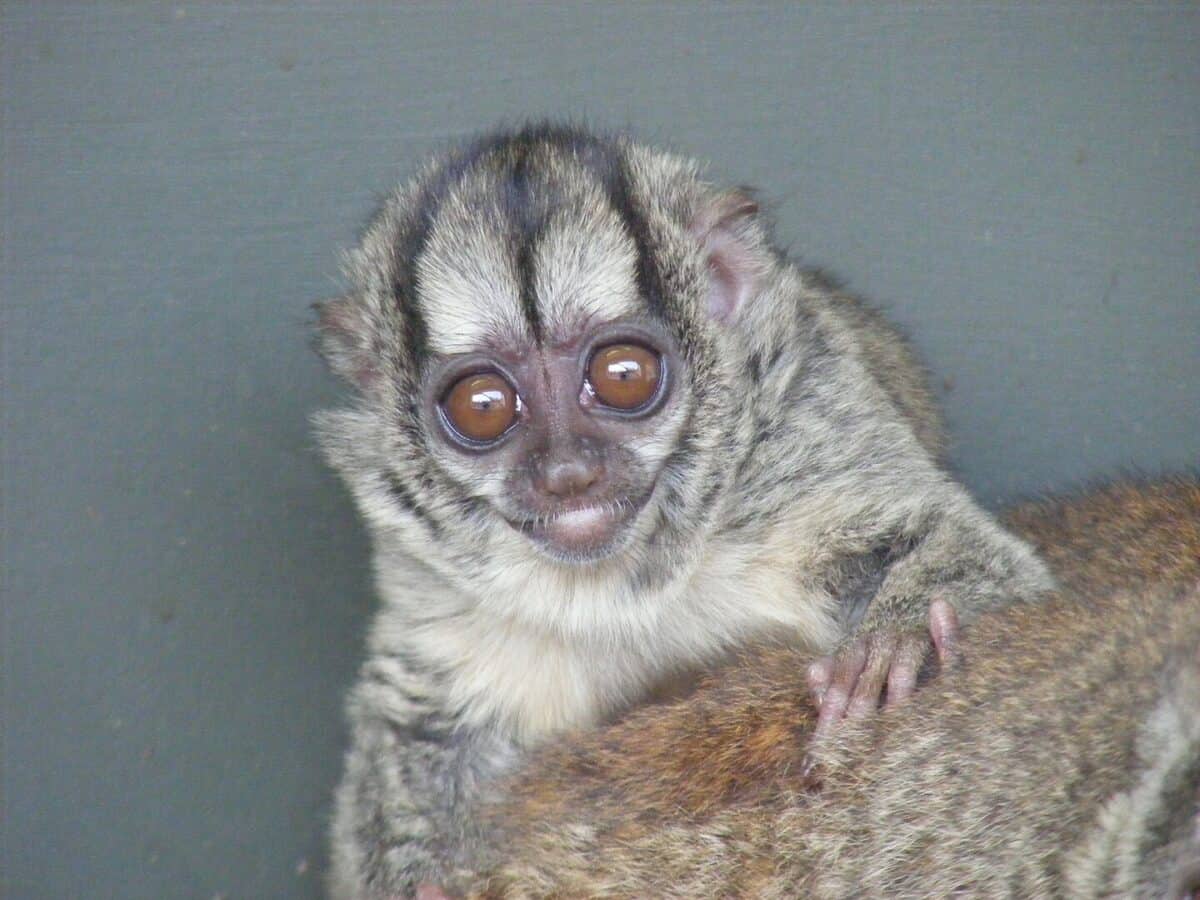
6. Fennec Fox
Fennec Foxes, found in the Sahara desert, are cute and unusual. The Fennec Fox is amongst the smallest fox species, weighing up to three and a half pounds. Their cream-colored fur and six-inch ears help them regulate their body temperature and find prey. Their eyes are high on their heads and larger than any other fox, even though they are little.
In the desert, Fennec Foxes need excellent eyesight to hunt and scavenge. Their eyes can dilate to respond to the strong sunshine and have a wider peripheral vision to identify predators and prey. The Fennec Fox has excellent night vision and can detect any movement from small insects or prey, even those well disguised in their sandy habitat, thanks to its big eyes.
Their unusual eyes reduce their water needs in the desert and help them hunt. The Fennec Fox can locate fruits, roots, and tubers from afar, saving energy. In the arid heat, their huge eyes help them lose heat. Fennec Foxes’ gorgeous eyes help them survive in their hard environment.
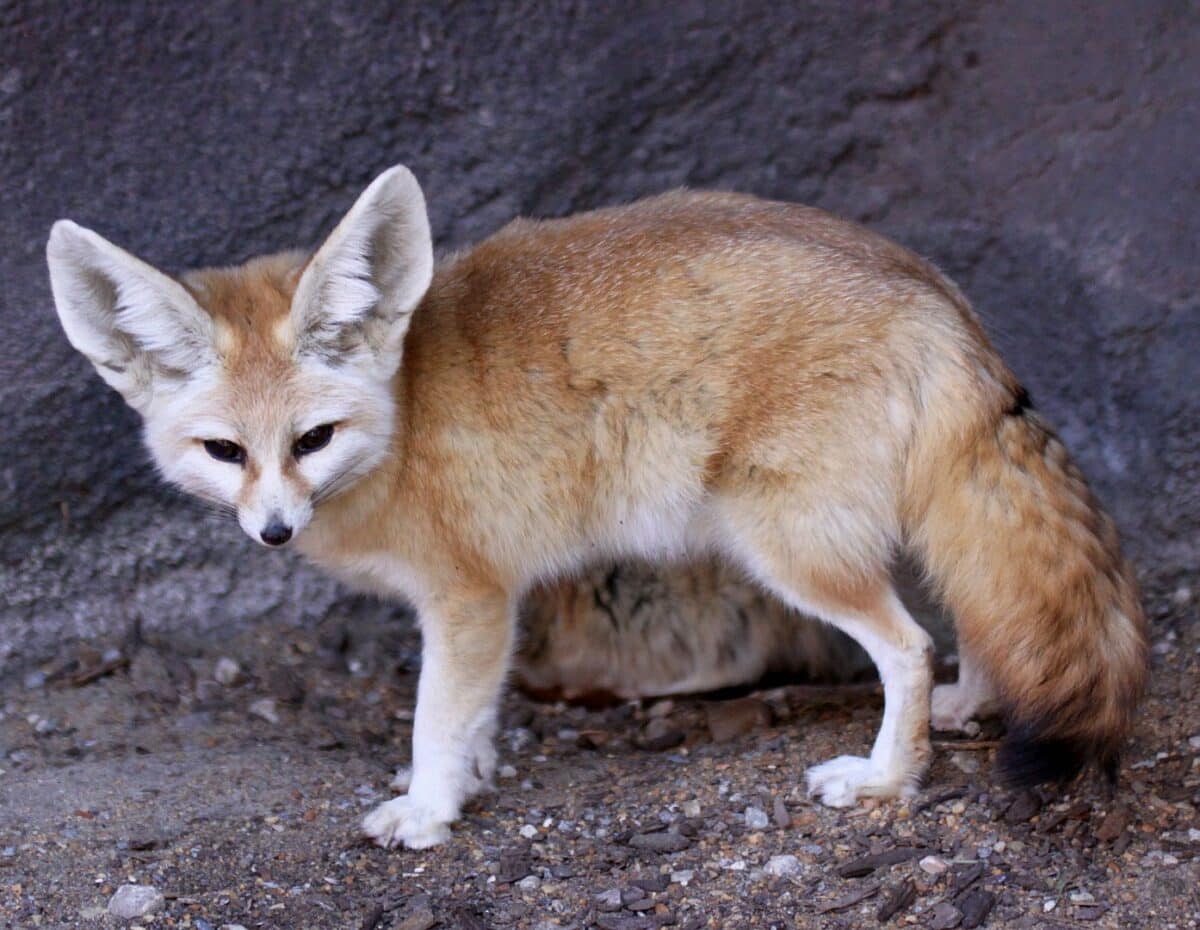
7. Axolotl
The Mexican walking fish, or axolotl, is a fascinating aquatic salamander with charming and unusual features. Its huge eyes on top of its head can spin independently, allowing it to observe in multiple directions. Axolotls have flat heads with little gills on the sides of their necks, slimy skin in pink, gray, or brown, and a length of 6 to 18 inches.
Axolotls have excellent eyes that help them hunt and mate. Their eyes are about the size of a pea, but their pupils are two to three times larger than those of similar-sized animals, allowing them to see well in dim light. Axolotls’ sluggish metabolism and eyesight allow them to see tiny shrimp, worms, and beetles. Given their limited swimming ability, this helps them hunt and catch food without moving much.
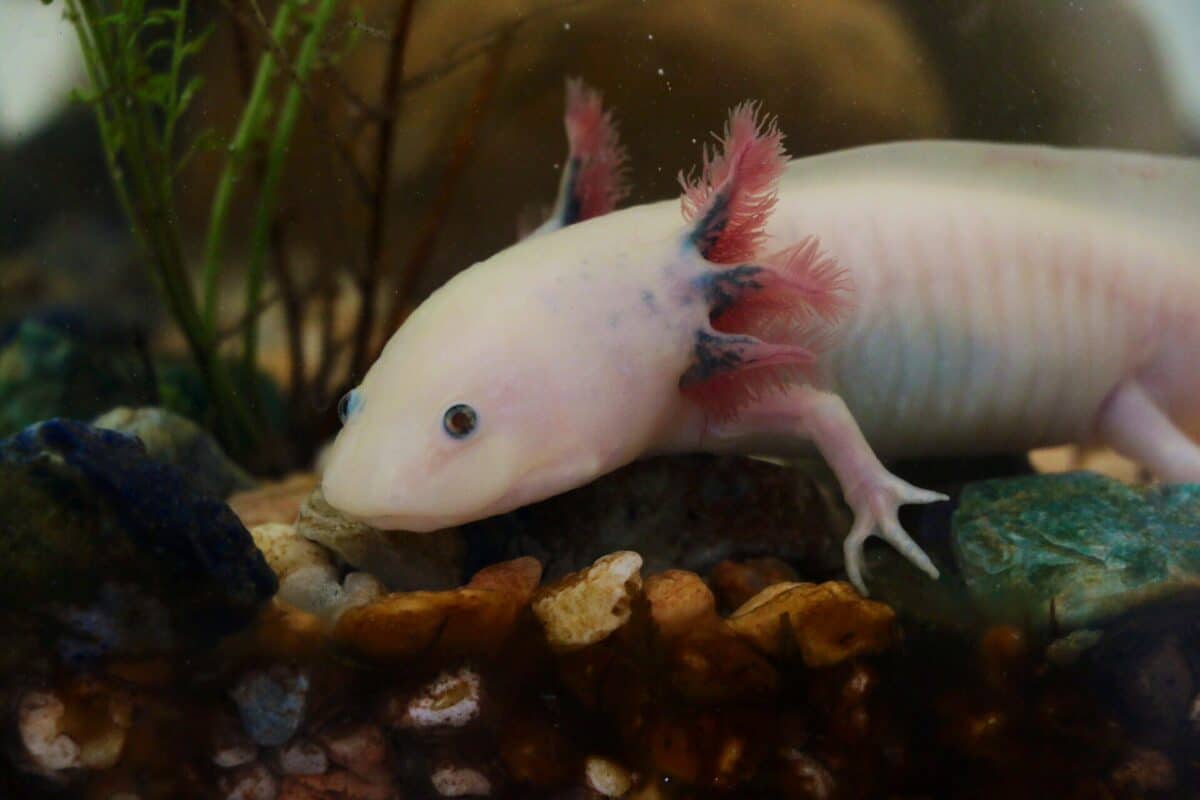
8. Treefrog
Tree frogs have vivid eyes and sticky toes. Large, bulbous eyes dominate these small animals’ faces. Tree frogs have slimy, green skin and stunning eyes.
Tree frog eyes have a unique adaptation for low-light vision. They can see in near darkness thanks to their large pupils. Tree frogs can see farther than other animals their size due to their big corneas, which focus light onto their retinas.
Their huge eyes help them survive, which may surprise you. Tree frogs’ large eyes are especially useful in the rainforest. Here, their huge pupil size gathers as much light as possible, helping them to discriminate different colors of green to fit in better. This protects them from birds, snakes, and other predators hunting for a snack.
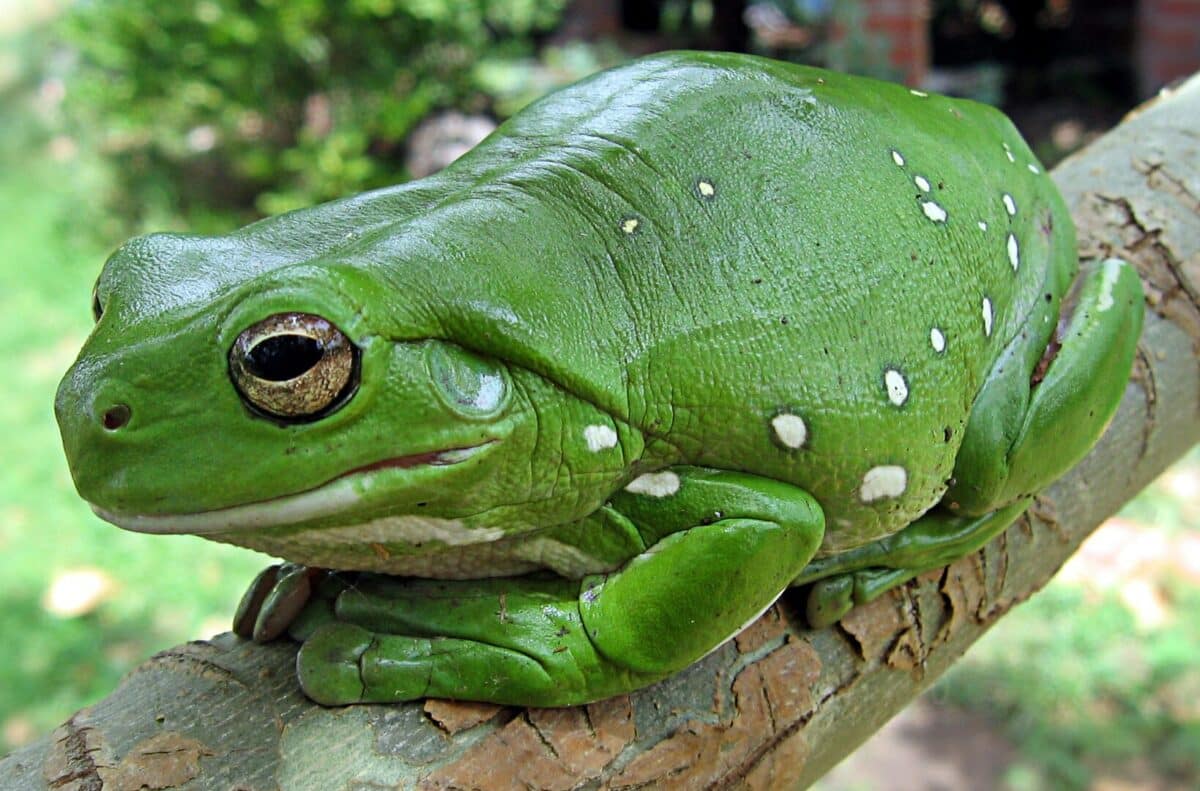
9. Kangaroo
Australian kangaroos are famous for their hopping skills. They’re also unique physically. Kangaroos have large, expressive eyes on the sides of their skulls for exceptional peripheral vision. Their eyes are proportionately larger than their heads, making them even more conspicuous. Kangaroos’ horizontal pupils dilate quickly, improving their low-light vision.
They can notice predators because their eyes are positioned to see 300 degrees. Kangaroos can see far, which helps them hop. They see food, water, and other kangaroos. Kangaroos do not sweat. Therefore, their wide eyes help them cool down and stay hydrated.
Their varying stride lengths improve depth perception and balance when hopping. Kangaroos utilize their muscular legs and tails to jump and balance. While hopping, their eyes assist them in identifying terrain changes and predators, allowing them to modify their hopping speed.
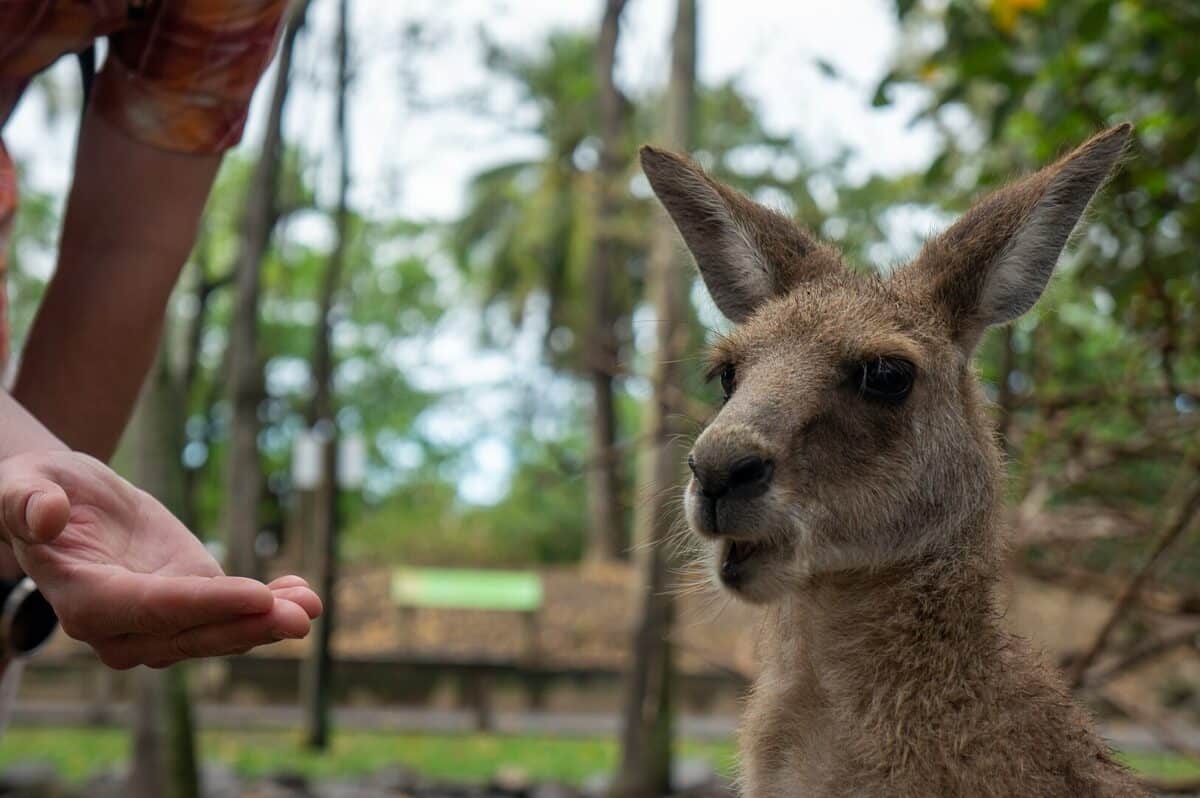
10. Dogs
Dogs have always been a man’s best friend, and their big, expressive eyes are one of their most enchanting features. These loyal companions have been bred for thousands of years to work with humans, and their eyes have evolved to communicate with us. Dogs can easily read facial expressions, and their eyes can even move independently, allowing them to track prey or potential threats better.
Of course, dogs aren’t the only animals with big eyes – but their unique bond with humans makes them a perennial favorite. Whether they’re gazing up at us with big, soulful eyes or wagging their tails in excitement, it’s hard not to be charmed by these furry friends.
Whether you prefer chihuahuas or Great Danes, there’s no denying that dogs are some of the most fascinating and beloved big-eyed animals in the world.

Frequently Asked Questions
What is the purpose of big eyes in animals?
Big eyes in animals serve several purposes, including improved vision, detecting predators, hunting, and social communication. In some species, large eyes allow for a wider field of vision, allowing them to detect prey or predators more easily. In other animals, large eyes may communicate emotion or establish dominance within a group. Additionally, nocturnal animals have larger eyes to collect more light in low-light environments.
What are some of the most fascinating big-eyed animals?
Some of the most fascinating big-eyed animals include the tarsier, a small primate with eyes that are disproportionately large for its size; the giant clam, which has dozens of small eyes that help detect predators and plankton; and the leaf-tailed gecko, which has large eyes that enhance its ability to see in the dark and spot prey. Other big-eyed species include the owl monkey, the bushbaby, the axolotl, and the saiga antelope.
How do big eyes in animals evolve?
The evolution of big eyes in animals is generally attributed to a combination of factors, including the need for improved vision, increased predation pressure, and social communication. As animals adapt to their environment, they may develop larger eyes to cope with their challenges. For example, prey animals may develop larger eyes to detect predators, while nocturnal animals may need bigger eyes to see in the dark. Additionally, animals that live in groups may have larger eyes to communicate social information to others in their group. Ultimately, the evolution of big eyes in animals is a complex process that varies depending on the species and its unique environmental pressures.
The Bottom Line
Finally, big-eyed animals are amazing. These animals astound us, from the stately owl’s mesmerizing gaze to the charming sluggish loris with huge eyes. Our top 10 species have remarkable traits that set them apart. How do animals interpret these large eyes?
It aids nighttime hunters like the tarsier. It helps the leaf-tailed gecko blend in. These creatures evolved these enormous, gorgeous eyes as a survival tactic. This article may have piqued your interest in animals with huge peepers and their unique adaptations.
If you enjoyed this blog, read more on:
Roger Federer vs. Kangaroo – The Ultimate Leap Competition
Join our Forum for free today!

- Usain Bolt vs. Peregrine Falcon – Speed Test in Their Domains - May 18, 2024
- Top 10 Animals in Yellowstone National Park - April 12, 2024
- Top 10 Omnivores - March 9, 2024

